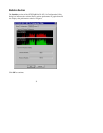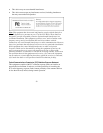36
Authentication and WEP Encryption
The absence of a physical connection between nodes makes the wireless links
vulnerable to information theft. To provide a certain level of security, IEEE
802.11 standard has defined two types of authentication methods, Open System
and Shared Key. Open System authentication is a null algorithm. Shared Key
authentication is an algorithm where both the transmitting node and the
receiving node share an authentication key to perform a checksum on the
original message. By default, IEEE 802.11 wireless devices operate in an open
system network.
Wired Equivalent Privacy (WEP) data encryption is utilized when the wireless
nodes or access points are configured to operate in Shared Key authentication
mode. There are three shared key methods implemented in Netgear’s 802.11a
solutions: the standard based forty-bit WEP data encryption and 128-bit WEP
data encryption plus the extended 152-bit WEP data encryption.
The forty-bit WEP data encryption method allows for a five-character (forty-bit)
input. Additionally, 24 factory-set bits are added to the forty-bit input to
generate a 64-bit encryption key. (The 24 factory-set bits are not user
configurable.) This encryption key will be used to encrypt/decrypt all data
transmitted via the wireless interface. Some vendors may refer to the forty-bit
WEP data encryption as 64-bit WEP data encryption since the actual encryption
key used in the encryption process is 64 bits wide.


















